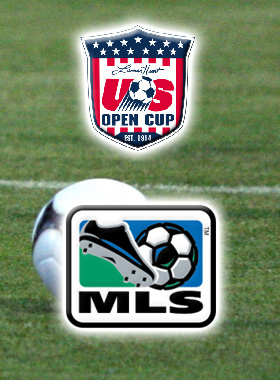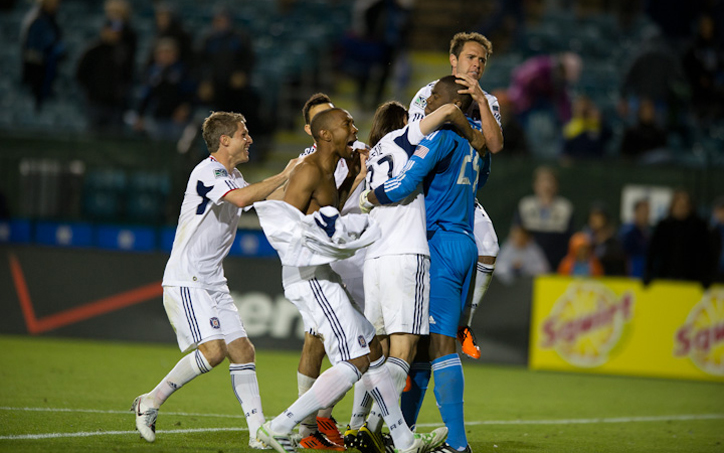After a Major League Soccer Board of Governors meeting on Wednesday, Dec. 13, the league announced on Friday evening, December 15, that they were “planning” to be represented by their MLS NEXT Pro teams in the 2024 Lamar Hunt US Open Cup. MLS stated that they would then reevaluate their participation for future years at […]
Major League Soccer
2022 US Open Cup Round 4: Previews, ESPN+ links for all 16 games
The Fourth Round of the 2022 U.S. Open Cup kicks off this week with 16 games, six on Tuesday and the remaining 10 on Wednesday. The final two amateur clubs (FC Motown, North Carolina Fusion U-23s) were eliminated in the Third Round, meaning there are no more clubs alive that entered in the First Round. FC […]
MLS-owned USL teams not allowed in 2016 US Open Cup, per USSF policy change
On Sept. 8, 2015, the Board of Directors passed an amendment that will ban all Major League Soccer-owned USL teams from next year’s tournament.
Philadelphia Union honor five time US Open Cup champ Bethlehem Steel with new jersey (video)
As part of the ongoing MLS Jersey Week leading up to opening weekend of the league season, the Philadelphia Union today unveiled the new third jersey, a retro design created to honor the Philadelphia area’s most successful soccer club Bethlehem Steel.
The Other US Opens and marketing the ‘US Soccer Majors’
TheCup.us will now refer to the Lamar Hunt US Open Cup, MLS Cup, MLS Supporters’ Shield, and CONCACAF Champions League as the ‘US Soccer Majors.’ It’s an effort to raise the profile of all the championships that teams in the U.S. play for, similar to the sports of golf and tennis.
2011 US Open Cup: The Best of MLS in Third Round
While the Chicago Fire and new homeowners Sporting KC are working their way up the table, one thing is blatantly obvious heading into the Third Round. The eight clubs representing the league are currently the best in the league as the contingent has not lost a game versus their MLS opponents that did not qualify for the Open Cup in a remarkable run of 30 consecutive matches dating back to May.
2011 Third Round MLS pairing scenarios announced; Rochester only lower division team to host
The USSF announced the pairing and hosting scenarios for the Third Round of the 2011 Lamar Hunt US Open Cup Tuesday afternoon, unveiling the opponents for the eight MLS clubs that enter the tournament June 28 and 29. Seven of the eight MLS clubs are guaranteed to host their opening match with the Chicago Fire the lone exception as they would travel to play the Rochester Rhinos.
2011 US Open Cup qualifying (Win & You’re In): Sporting KC qualify with drubbing of 2nd string New England
In the pouring rain, Sporting Kansas City became the eighth and final MLS entry into the 2011 Lamar Hunt US Open Cup after thrashing the New England Revolution, 5-0. Chance Myers and CJ Sapong each scored two in the most lop-sided MLS qualifier ever.
2011 US Open Cup qualifying: Chicago Fire rally, beat Earthquakes in PKs to keep Open Cup streak alive
Trailing 2-0 at halftime, it looked as though the Chicago Fire were going to miss the Lamar Hunt US Open Cup for the first time in team history, but a pair of second half goals and a San Jose shot off the crossbar in sudden death penalties kept the perfect appearance record intact. The rally by the visitors dashed the Earthquakes’ hopes of returning for the first time since 2005.
2011 US Open Cup qualifying updates: MLS play-in tournament underway
For the fifth year in a row, Major League Soccer will conduct a play-in tournament to narrow the number of teams that enter the Lamar Hunt US Open Cup. Beginning on June 28, eight MLS clubs will join the 98th edition of the tournament in the third round, with the top six MLS teams based on the 2010 league standings automatically qualifying. The 10 remaining US-based clubs are left to fight for the last two spots.








